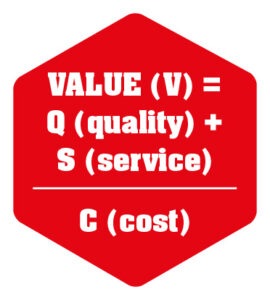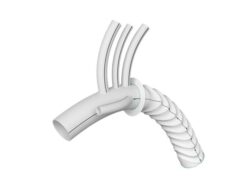
Value-based payments (VBP), or “volume to value,” was the new buzz word over a decade ago, promising yet another chimera in ways to reimburse physicians and hospitals based upon “value,” instead of fee-for-service (FFS). VBP models link payment or compensation to healthcare outcomes, infrastructure and quality of care rendered. The value equation states that value is the product of the quality of care plus the patient experience at a given cost.
The idea was to bend the healthcare cost curve and improve healthcare outcomes. If these models succeeded, we would expect better patient satisfaction, greater efficiency, improved outcomes, and lower cost.
I am reminded of advice for healthcare executives to follow these four points: Do not sell “risk” as a shiny new object; connect value-based care to existing priorities; message should be related to physician day-to-day work, not yours; and be sure to use risk to advance clinician engagement.1 This advice was priceless in retrospect.
The Affordable Care Act (ACA) of 2010 ushered in the “VBP payment modifier,” starting with Medicare’s flagship Shared Savings Program (MSSP), Accountable Care Organizations (ACOs), followed by advanced alternative payment models (APM), the Medicare Access and CHIP Reauthorization Act (MACRA), the Merit-based Incentive Payment System (MIPS), and the list goes on. Currently, four main types of VBP models exist: performance-based payments, bundles, shared savings, and risk and capitation.2

The Department of Health and Human Services (HHS) aspired to convert 30% of FFS Medicare payments to VBP models by the end of 2016, and 50% to make the switch by 2018. Data show that 38.2% of healthcare dollars flowed through some type of VBP model as of 2019.
The success of VBP programs is mixed with many models failing to show a major impact thus far. For a while, ACOs and VBPs showed some early cost reductions, but neither seemed to significantly impact the quality of care. A Deloitte survey of 680 U.S. physician respondents in 2020 showed that nearly all still relied on FFS reimbursement and only one-third said some of their compensation was tied to VBP.2 An AMA analysis in 2018 showed that salary is the most common method (52.5%), followed by productivity (31.8%). Some 33% of surgical specialists were paid strictly on productivity. Why is FFS still the dominant reimbursement method?
Hospitals and physicians strongly prefer FFS since they are used to being reimbursed by the system, and they believe they are being compensated fairly. Although physicians remain split on whether FFS care is best (about 70% favor it), most agree that the time for it has come and gone since they see the waste in the system. They know FFS is more expensive. A survey from Bain & Company of almost 1,000 physicians, along with health system finance and procurement officers, showed that physicians feel helpless to control costs, even though they understand that both cost of clinical care and pharmaceuticals need to come down.3 Physicians feel they are being overruled and “managed” rather than being asked to sit at the table where decisions are made.
Lack of great promise
The lack of strong empirical evidence has also slowed the implementation of value-based care. Physicians are aware of many previous iterations of healthcare reimbursement models and the fact that population-based VBP models have not thus far shown great promise. Furthermore, there are not enough incentives for managing the total cost of care, and not many physicians are willing to take the downside risk with APMs.
Physicians are also uncertain about the guiding principles for any new VBP formula. How is value defined and what does it mean? Are clinical-decision support and analytic systems up to date? Is there flexibility in the compensation for surgeons who wish to be compensated for working harder or working less? For surgeons, the quality component means judging the decision to operate or not, the choice of the appropriate procedure for that condition, the technical success or failure, and the ultimate outcome, compared with benchmarks. Since some of these targets are hard to measure, we are left with items like antibiotic guidelines or thromboembolic prevention as examples that have only a modest amount to do with the essence of surgery.
Finally, the timing of payments is complex and may vary, making revenue collection difficult to predict. Take the shared savings programs such as bundled payments. Other than large hospitals and medical groups with resources to hire expert help, most physicians do not have the tools, processes, and the analytic capability to assess risk- or value-based contracts. So, while interest in VBP contracting over the last decade has been a high priority, the reality is that actual implementation has not matched the interest.
While more data is awaited, VBP has had no significant impact on slowing the growth in healthcare costs thus far. The main reason is a consensus on the definition of value and data standards. Second, from a system standpoint, hospitals have difficulty determining the actual internal cost (not charges) and even quality of care at the individual level to plan for an outcomes-based payment model. Patient outcomes are also difficult to match with the standards because of absence of shared platforms.4 Third, incentives are not aligned from the system down to hospitals and medical groups. Finally, the infrastructure—including population and management analytics—is expensive, particularly in the beginning, and negates any savings.
Quality performance measures
There are some bright spots. In an MGMA Stat poll in 2022, 42% of medical groups said quality performance measures are included in physician compensation plans.5 In another survey, two-thirds of physicians have linked to VBP, and over half believe it improves quality and trims costs.6
Ironically, 69% are not using proper technology to identify at-risk patients, and 72% are not linking to medical and social data. So, in 2022, while the vast majority believe the end of FFS is here, 60% of FFS is either not linked or somewhat linked to value and quality, another 27% are APM models based on FFS, and 15% on population-based payments.
Some bundled payment and ACO programs have succeeded, but most do not have the resources, time, or administrative or financial experience to take a higher risk proposition.
The Centers for Medicare & Medicaid Services (CMS) estimates that since 2015, savings increased tenfold to more than $4 billion in 2020. It is also true that VBP programs may have done better with per-member-per month premiums during the COVID-19 pandemic than the unreliable FFS programs.
After the last decade of experimentation, physicians want empirical evidence that evolving models of patient care management, compensation, and policies work.3 As Bain & Company maintain, without sound evidence, high quality of care will remain elusive, and unengaged physicians will remain on the sidelines. If physicians readily admit that FFS is expensive, their involvement at the grassroots to help lead the change is imperative. They should be part of agreements on guiding principles, transparency, equity across specialties, and adjust for personal choices for individuals consistent with the hospital’s financial and quality goals.2
Some analysts believe the current VBP models are simply FFS “lite.” Goldsmith comments that MedPAC has called the VBP movement a disappointment.7 He also states that hospitals have not recovered the billions of dollars into these models. Moody’s data for 2020 showed that the median percentage of risk-based payment of total hospital revenues is 1.1%, down 0.5% from 2018.
Furthermore, clinicians have spent countless non-reimbursable hours debating and documenting these quality measures. The impact of horizontal and vertical mergers of hospitals, physicians and insurers on VBP is unknown.
The physician dilemma has been well stated by Berenson and Kaye who comment that “practical reality is that CMS, despite heroic efforts, cannot accurately measure any physician’s overall value, now or in the foreseeable future,” concluding, “yet the medical profession has been remarkably quiet as this flawed approach proceeds.”8
And proceed it has. Some experts claim that COVID-19 has hastened the move to VBP, that private equity firms are betting on innovation and newer models of care, and that healthcare plans and payers are leading the way.9 The future remains clouded. My questions are: how is it going to be different this time, and are many physicians involved?
References
- Dailey E. Win physician buy-in for value-based care. https://www.advisory.com/Topics/Population-Health-ROI/2021/03/Win-physician-buy-in-for-value-based-care.
- https://www2.deloitte.com/us/en/pages/life-sciences-and-health-care/articles/value-based-care-payment-models.html.
- https://www.bain.com/insights/front-line-of-healthcare-report-2017/.
- DeLone M. If value-based contracts succeed…we might not need them anymore. Deloitte.
- https://www.mgma.com/practice-resources/revenue-cycle/shifting-to-value-amid-pandemic-and-staffing-chall.
- https://innovaccer.com/resources/industry-reports/the-state-and-science-of-value-based-care.
- Goldsmith J. Commentary in https://www.healthaffairs.org/do/10.1377/forefront.20220125.362333/.
- Berenson RA, Kaye RK. Grading a Physician’s Value—The Misapplication of Performance Measurement. N Engl J Med 2013 Nov 28;369(22):2079-81. doi: 10.1056/NEJMp1312287.
- Jacob A, Guthrie F. Accelerating value-based care: Why health plans now hold the keys | Viewpoint. https://www.chiefhealthcareexecutive.com/view/accelerating-value-based-care-why-health-plans-now-hold-the-keys-viewpoint.
Bhagwan Satiani, MD, is a Vascular Specialist associate medical editor .












